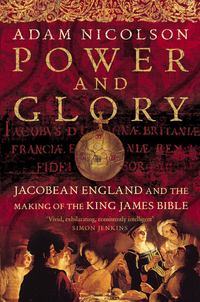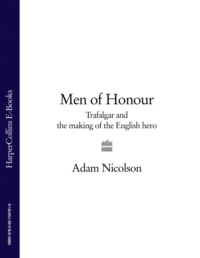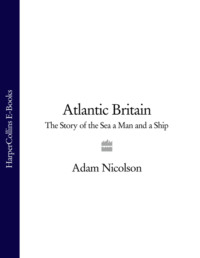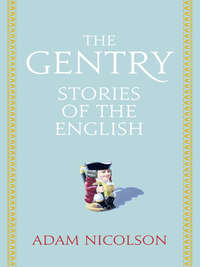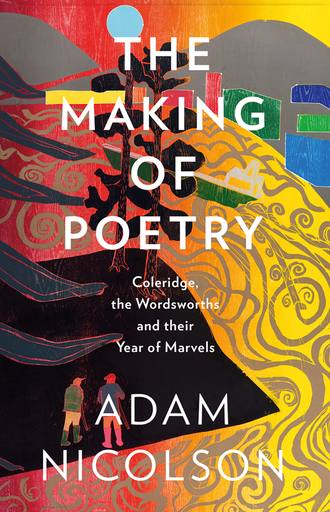
Полная версия
The Making of Poetry: Coleridge, the Wordsworths and Their Year of Marvels
Nor we alone, but that which each man loved
And prized in his peculiar nook of earth
Dies with him, or is changed, and very soon
Even of the good is no memorial left.
In the garden is a neglected spring, and the poet goes to drink there:
A spider’s web hung to the water’s edge
And on the wet and slimy foot-stone lay
The useless fragment of a wooden bowl.
It moved my very heart.
A young woman, Margaret, had lived in the remote cottage, and always welcomed passers-by. Her husband Robert had worked in the garden, often late,
till the day-light
Was gone, and every leaf and flower were lost
In the dark hedges.
One or two other poets – Southey, Cowper – had managed to write of simplicity and suffering in this low, gentle, absorbent, un-self-proclaiming way, in which the reality underlying the poetry matters more than the surface of the poetry itself, but ‘The Ruined Cottage’ is something new in Wordsworth’s life. Its facts, like those leaves and flowers sinking back into the darkness of the evening hedge, have become the modest elements of an unquiet landscape. The whole poem exists in a border state, ‘without the application of gross and violent stimulus’, as he would describe the qualities of valuable poetry the following year, but attentive to the sorrows of the story it tells.
It is tempting to think, given the permeability of the boundary in Wordsworth’s mind between the remembered and the imagined, between some other reality and his own experience, that there is autobiography underlying this tale of distress. Margaret is one of the many women in Wordsworth’s poetry who are left with their children to fend for themselves, and suffer as a result. He said himself that in ‘several passages describing the employment & demeanour of Margaret during her affliction, I was indebted to observations made in Dorsetshire’, but there was a more powerful stimulus than the poor he met on the paths and roads of Dorset: the knowledge and memory of the woman and child he had abandoned in France.
This sort of figure had haunted Wordsworth’s imagination before he had met – or left – Annette Vallon, and they appear, usually in much more exaggerated form, in the poetry of many of his contemporaries. But here, in the simple, first version of ‘The Ruined Cottage’, there is a kind of conceptual democracy at work, by which Margaret’s modest truth is allowed to be as valid as any other. There is no need to exaggerate, because exaggeration is a form of obscurity. And so the poem looks carefully at the quiet facts around her. The bad years had come – war and summers when ‘the fields were left with half a harvest’, a sickness everywhere and no work:
shoals of artizans
Were from their daily labour turned away
To hang for bread on parish charity,
They and their wives and children, happier far
Could they have lived as do the little birds
That peck along the hedges or the kite
That makes her dwelling in the mountain rocks.
Robert was driven to the army as the only source of employment, and before he went, left for Margaret and their children a bag holding ten guineas, eight months’ pay for a labourer, given as a bounty to all who volunteered. She waited five years for him to return, a kind of vacuity in her:
in that broken arbour she would sit
The idle length of half a sabbath day;
There, where you see the toadstool’s lazy head;
And when a dog passed by she still would quit
The shade and look abroad.
Dorothy copied out for Coleridge the lines describing Margaret’s paused and eviscerated life, in which, sitting in the ruin of her cottage,
Her tattered clothes were ruffled by the wind
Even at the side of her own fire
and he sent them in amazement in a letter to a Bristol friend, evidence that Wordsworth had broken through to a new level of poetic speech, in which the story was embodied in language that claimed no status greater than what it described. Wordsworth’s language had itself become the medium for empathy and democracy, and for that Coleridge recognised greatness in him.
4
Settling
July 1797
Coleridge brought the Wordsworths over to Stowey from Racedown at the very beginning of July, at first for what they all thought was to be a short visit. He borrowed a one-horse chaise and drove them – ‘always … very cautious’ – all day along the execrable Dorset and Somerset roads.
Even at first sight, arriving on a July evening, Nether Stowey is a place for entrancement. From the castle motte above the village, England is there in all its beauty. The low nose of the Quantocks pushes out dark blue and gold in the shadows towards the sea at Kilve. The sun is setting, at nine o’clock, well to the north of west over the Bristol Channel. The sheep grazing around the Norman mound are haloed by that last light. It falls on the power station at Hinckley, on the two purple, shadowed islands in the channel, Steep Holm and Flat Holm, with the line of Wales behind them, beyond the sky-blue band of sea.
Is this what people have always seen? Or am I seeing it because Coleridge has taught me to see it? It feels golden, honeyed, a sweetness poured over the country and into it, into the fescues and little vetches and vetchlings at my feet, all of which are glowing now as if they were part of the mended world.
Down the streets of the little town below the castle, the swifts are sweet-screaming, whistles blown through atom-wide mouths, with the martins above them, and midges alight in the sun-shafts between the buildings. Beyond the tile and slate of the roofs and the church tower are the blocks of woodland, the golden windows of the cornfields, the hedgerow oaks now nearly black, gone monumental in the dusk, the dabbed dark ink marks of summer trees.

Honeyed world
Stowey swifts sweet-screaming
Everything is still, but a dog barks and the young rooks chatter and caw between them. The swifts are making sudden power turns in among the buildings, weaving their paths down South Lane, back over the houses in Castle Street, over the road to Spaxton and then into the narrow canyon between the cottages in Lime Street before climbing up over the roofs, again and again. A stream from the hills runs down the streets in a wide stone gutter, almost soundless now in its reduced summer flow. Even on a beautiful sunlit evening, the little town closes by the time the sun sets. There are drinkers in the pubs, and the sound of televisions comes through open windows. If anywhere can seem well, this place does.
In reality, Nether Stowey in the 1790s was no dream world. It was still connected to its medieval past. Every winter, pairs of heavy oxen ploughed the red Quantocks soil. Old Somerset men talked in a way William Holland, the Oxford-educated vicar of Over Stowey, couldn’t understand, shouting at their animals ‘Jubb along, jubb along’ – meaning, Holland guessed, that the vast oxen should somehow be skipping and jumping down their furrows. Every Tuesday, farm women brought their eggs and butter for sale to the market cross in the centre of Stowey. The poor climbed the hills to the commons, called the Stowey Customs, to cut the gorse or ‘furze’ for their bread ovens, bracken for animal bedding, picking up fallen wood for their own fires. The fields of the parish still bore their ancient names: Cockley Land, Strawberry Hill, Fuzz Ground, Great Warren, Castle Ground.
This rooted, intractable and impoverished life was dense with pockets of isolation. Fevers broke out in individual villages, and all hoped that the contagion would not spread across the fields. On occasions a whole village forgot its connection to the rest of the world, and when Holland arrived to conduct a service the people asked him to remind them what time or date it was. In some parts of the parish the poor still celebrated Christmas on Twelfth Night, as the whole of England had a century or two before.
In the winter, with lanes deep in mud, the vicar rode around like a modern man in an ancient world, his servant Morris following on foot. ‘I had an umbrella and was obliged frequently to shake off the snow and Morris every now and then shook the skirts of my coats.’ Arriving at one of the outlying hamlets in the parish, wearing his clerical black and gaiters, he had the church bell tolled, and the congregation walked slowly in from the fields, a scene from the Brueghels. With sermons, weddings, baptisms, funerals, he regulated the life of his flock. Forty days after the birth of a child, according to the teachings of Leviticus, Holland liked to ‘church’ the mother at a special ceremony in which a veil was worn, reaccommodating women who were considered defiled by the process of giving birth.
Returning from a summer walk, Holland called on an ‘old sick dropsical woman’. She was living in a kind of horror-slum which he called ‘the Indian village’ – a few hovels gathered on the edge of the Quantock woods. Her house
was a shocking place. No chimney for the smoke – I could scarcely stand it, and was almost suffocated to death. The poor woman was brought downstairs, and her daughter and grand-daughters around her, and she gasping for breath. They told us that one part of the house was sold to Davies, who was to make a chimney for them.
The tiny hut had been subdivided on the condition that the man called Davies would take the smoke out of the rooms in which the family was trying to live. But Holland knew him. ‘Davies is one of the greatest rascals that haunts the hills.’ He happened that morning to be outside, in the field making hay. Holland went up to him, and asked why he had not done what he had promised. Davies lied calmly to his vicar.
The man was civil to me, and assured me that he was by the agreement to do no such thing. At this the old woman’s daughter rushed out of doors, and there was such a terrible set to that I and my family walked off; but the sound of their voices, shrill and deep, followed us most part of the way to Over Stowey. A sad set – the wretched inhabitants of three or four huts, like a nest in the bosom of Quantock, and living there without law or religion or the fear of God or man; for they never come to church, and what to do with them I scarce can tell.
These are the people of Wordsworth’s poetry seen from the point of view of the hierarchy presiding over them. Holland may have felt resourceless in meeting them, but his answers were the stock ones: fear the law, submit to the disciplines of the Church of England, restore the picture because the picture is the frame of goodness. These were precisely the attitudes that the young men of the next generation were set on changing.
The Coleridges were embedded in this beautiful and troubled world. The three of them – Coleridge himself, his wife Sara and their son little Hartley – were living with a much-loved maid called Nanny in a small cottage up at the top end of Lime Street. They had a well and a garden at the back, in which Coleridge thought he could ‘raise vegetables & corn enough for myself & Wife, and feed a couple of shouted & grunting Cousins from the refuse’. There were indeed two pigs, plus ducks and geese, and some apple trees whose trunks were ‘crooked earth-ward’ and whose boughs ‘hang above us in an arborous roof’.
The house had three small dark rooms on each floor, in which the fires smoked and draughts found their way through windows and doors. The thatch was half-rotten. Anything left there would get damp. On wash days, the ‘little Hovel is almost afloat – poor Sara tired off her legs’. On the street side, a cobbled pavement stood up out of the mud that caked the street itself. A small millstream ran down the side of the pavement, ‘the dear gutter of Stowey’ which Coleridge said he preferred to any purling Italian brook, but the road itself was dusty in summer and in winter ‘an impassable Hog-stye … a Slough of Despond’. The half-foetid smell of tan-pits at the back came wafting over everything. At night, the people living in the parish workhouse just down from the cottage fought and argued, so that as Coleridge joked to Sara, Lime Street more often than not was ‘vocal with the Poorhouse Nightingales’.
Coleridge had been married to Sara for nearly two years. She was the sister of Robert Southey’s wife Edith, and all of them had been planning to set out on a dream expedition to America, where, with eight others, they were going to establish a Utopian community called Pantisocracy, meaning ‘the rule of all’, to be set up on the cheap land along the banks of the Susquehanna River in Ohio. It was to be ‘a Social Colony, in which there was to be a community of property and where all that was selfish was to be proscribed’. There were to be no formal laws, but ‘by excluding all the little deteriorating passions – injustice, wrath, anger, clamour and evil-speaking, – an example would be set to the world of Human Perfectibility’.
Stephen Fricker, Sarah’s father – only when she married Coleridge and at his insistence did she drop the ‘h’ from her name – had been a wine and coal merchant and publican in Bristol, with a good house in the country and another in Bath. Her mother, who came from a rather more upmarket family, with moneyed connections, had overseen the family’s life, and they had lived among the fashionable, in ‘a smartish way’. Sarah and her sisters were well educated, learning mathematics and grammar, history and French as befitted young women of bon ton. Sarah all her life used to drop her h’s in a distinguished, relaxed, upper-class way, and insert little French phrases into her conversation, discussing events entre nous and en passant, emphasising, au fait and au fond, how important it was to remain au courant. The seal she used to close up her letters, however despondent their contents might have become, year after year impressed the phrase ‘Toujours gai’ into the wax.
Stephen Fricker had spent beyond his means, and had failed at every scheme he had tried. In 1786, when Sarah was sixteen, he was declared bankrupt. A few months later he died, broken, aged forty-eight. The Fricker family was destitute. Their mother opened a dame school in Bristol and the teenage girls were set to work as needlewomen. There was zest and spark in them. They retained their ‘polished, calculated light style’, and for all their poverty had moved happily in the modern, radical, open-minded Bristol circles to which Robert Southey had introduced Coleridge.
When Sarah first met him, at dinner one day, unexpectedly, he had been on a walking tour in Wales and had returned ‘brown as a berry’. Her first evaluation was undeceived: ‘Plain but eloquent and clever. His clothes were worn out; his hair wanted cutting. He was a dreadful figure.’ Southey, who was ‘very neat, gay and smart’, agreed: ‘He is a diamond set in lead.’
The diamond could talk, the heady prospects of ‘the Scheme of Pantisocracy’ were in the air, Sarah herself was a woman of courage and self-possession, both forthright and capable of discretion and delicacy, and within a fortnight of meeting they had agreed to marry. Things did not run smooth. Coleridge seems to have committed himself to her at first only philosophically and as a duty. He and Southey both thought she would make an excellent Pantisocratic bride, just as her sister Edith would for Southey and a third Fricker sister, Mary, already had for a third Bristol poet-Pantisocrat, Robert Lovell. The young idealists had plumped for brides en bloc. On top of that, Coleridge was still agonisingly and undecidedly in love with another girl, Mary Evans, and when he went back to London and Cambridge for a while, he failed – to Southey’s and Lovell’s consternation and disgust – to give a thought to Sarah or to write her a single line, despite writing to others in the same household.
Coleridge’s chaos alienated Lovell and the other Frickers, who advised against the marriage and swirled superior offers in front of Sarah’s eyes. Two rich young men proposed when Coleridge was away, but she would have neither. When Coleridge returned to Bristol early in 1795, something had changed, and he could begin to be amazed by this beautiful, competent, strong-minded woman, who was quite clearly and courageously in love with him, despite what all around her were saying to the contrary. By the summer of that year he had fallen in love with her in return.
For £5 a year, before their marriage, they rented a cottage in Clevedon, on the shores of the Bristol Channel, where the tallest of the roses in the garden looked in at the window of the first-floor bedroom, and there, away from the world, in August 1795, in anticipation of their happiness, Coleridge had written his first great poem.
As much as Wordsworth’s twin entrancements with Annette Vallon and Michel Beaupuy, and his lines on the baker’s cart, this poem, called ‘Effusion 35’ in 1795, later ‘The Eolian Harp’, stands at the headwaters of the Quantocks year. Coleridge and Sara – no ‘h’ was an attempt to classicise her – are together on a warm and quiet August evening, within earshot of the sea. They sit beside their cottage, ‘o’ergrown/With white-flower’d Jasmin, and the broad-leav’d Myrtle’, and while Venus appears in the evening sky they watch the light fading from the clouds. Quietness envelops them, and the revolutionary world is a universe away.
How exquisite the scents
Snatch’d from yon bean-field! and the world so hush’d!
The stilly murmur of the distant Sea
Tells us of Silence.
Detailed, located, precise, simple, receptive. In the window of the cottage they have placed an Aeolian harp, a ten-stringed musical instrument, a yard long and about five inches square, part of the domestic equipment for all aesthetic middle-class families in the late eighteenth century, by which the wind passing over the strings plays strange and ethereal music, seeming at times like audible moonlight, quiveringly present and absent as the breeze shifts across it and the vibrations in one string summon the harmonics in the others.
For Coleridge, writing as if talking gently and conversationally, almost whispering, abandoning the public and stentorian address of so much eighteenth-century verse, including his own, this floating coming and going of the wind-music becomes, first, a gently erotic replaying of the feeling between the two of them:
And that simplest Lute,
Plac’d length-ways in the clasping casement, hark!
How by the desultory breeze caress’d,
Like some coy Maid half yielding to her Lover,
It pours such sweet upbraidings, as must needs
Tempt to repeat the wrong!
Then, as the gusts strengthen over it, the music seems to create a world of delicious fantasy, a soft and suggestive prefiguring of the dreams of Kubla Khan:
And now, its strings
Boldlier swept, the long sequacious notes
Over delicious surges sink and rise,
Such a soft floating witchery of sound
As twilight Elfins make, when they at eve
Voyage on gentle gales from Faery-Land,
Where Melodies round honey-dropping flowers,
Footless and wild, like birds of Paradise,
Nor pause nor perch, hov’ring on untam’d wing!
Coleridge’s mind knew no divisions. He may have been imagining these sounds as audible hummingbirds, but he was thinking, too. ‘I feel strongly and I think strongly,’ he wrote to a friend the following year, ‘but I seldom feel without thinking or think without feeling. Hence, though my poetry has in general a hue of tenderness or passion over it, yet it seldom exhibits unmixed and simple tenderness or passion. My philosophical opinions are blended with or deduced from my feelings.’

And what if all of animated nature be but organic Harps
And so the drifting half-sounds of the wind-harp, as if summoned from nowhere by nothing, become in his mind not merely the charged atmosphere between him and his wife-to-be, or a dream of sugared otherness, but the manifestation of everything that essentially is, in a universe full of significance. The Aeolian harp, it occurs to him, may be the mute world speaking, a legible or audible version of what could, if you were properly aware, be heard everywhere and all the time as the music of existence.
And what if all of animated nature
Be but organic Harps diversely framed,
That tremble into thought, as o’er them sweeps
Plastic and vast, one intellectual breeze,
At once the Soul of each, and God of all?
That trembling into thought, that vast ‘plastic’ breeze – the adjective means what it does in Greek, the moulding wind of a divine and universal spirit – blows through the Quantocks year. It is the shaping wind, standing opposed to the winds that often threaten in Wordsworth’s poetry, where they are the unsettling agents of otherness, bordering on the meaningless and the broken.
The idea of the world as a harp to be played on by the winds of intelligibility and significance is rarely absent from Coleridge’s mind, although this poem eventually withdraws from such a suggestion. Sara could not agree with him that the harp in the window might be speaking with the voice of God, and she reproved him for his heresy. But the suggestion remained – in the poem, in Coleridge’s mind, and soon, under Coleridge’s influence, colonising the mind of the Wordsworths – of a beautiful connectedness in all living things, by which all were part of one life, a coherence to which human society should be tuned and in which poetry, if it was to be valuable, needed to find its language.
At the end of 1796 the Coleridges moved to Nether Stowey, and into the frankly unsatisfactory house in Lime Street. An old woman called Mrs Rich came in to help Sara with the housework. She lived next door with a poor Stowey man called Daddy Rich. They had a son for whom they had scrimped and saved to set up in a currying business, cleaning the flesh from hides before they were tanned. The son knew no gratitude, had abandoned the business to go into the Marines and left his parents grieving for his absence. As Coleridge wrote to Southey, Daddy and Mrs Rich spent their lives
wishing & praying only to see him once more/and about a fortnight ago he returned, discharged as an ideot. – The day after I came back to Stowey, I heard a cry of Murder, & rushed into the House, where I found the poor Wretch, whose physiognomy is truly hellish, beating his Father most unmercifully with a great stick –/I seized him & pinioned him to the wall, till the peace-officer came –/– He vows vengeance on me; but what is really shocking he never sees little Hartley but he grins with hideous distortions of rage, & hints that he’ll do him a mischief. –And the poor old People, who just get enough to feed themselves, are now absolutely pinched/& never fall to sleep without fear & trembling, lest the Son should rise in a fit of insanity, & murder them.
In the Lime Street poorhouse, men in a fit would be given gin – a whole bottle if need be – to calm them. A man living there had twice made his sister-in-law pregnant. His brother, her husband, had been transported to Australia. The man told William Holland, the vicar, that he wished to know whether it was ‘more sinful in the eye of God’ to live with her as his mistress or his wife. Holland had no answer. Conventional morality could not accommodate a living husband imprisoned on the far side of the world. The troubles of the 1790s had found their way into every nook and cranny, and this combination of war, despair, hunger, a global perspective and the fracturing of lives lay as the background to much of what the poets would write in their year together.


